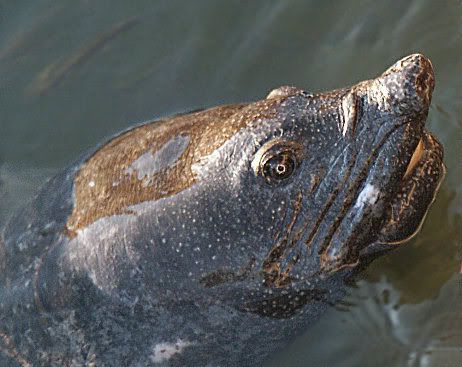 |
| Image from CITES |
Yes, this is the Saiga Antelope2 (Saiga tatarica), which I mentioned in the footnote of the last post; it’s the one that looks like that informant from Star Wars3. They are more than just their big nose, but it’s big and ugly enough to make one ask: Why the nose?
It took a bit of searching to find an answer. ARKive states that the gigantic schnoz is used for warming the cold air of the winter, and for keeping the dust out in the dry summers. I don’t just have to take their word for it, since this article (which also has some rockin’-cool skull images) also mentions it (I think):
The enlarged nasal vestibule, lateral vestibular recess, repositioned basal fold, and septal cavernous mass are regarded as a coordinated adaptation to dusty habitats, such that nasal air flow can be dynamically regulated allowing for collection of inspired particulates in the vestibule and thus cleansing of air destined for the lungs.Moving away from the nose (seriously, stop staring), the Saiga lives in Eastern Europe and Western Asia, wintering in the deserts and summering in the dry steppes, moving up to 70 miles per day during their migration north in April and south in November. Rutting happens at their wintering sites, where males gather up harems of females and fight fiercely for them. I’m sure many of you have heard that most animal fights are ritualistic and don’t end in death—most. The male mortality rate of the Saiga can reach 90%, much of that due to exhaustion. Those who survive start the trek back north to the steppes.
CITES has banned trade of Saiga parts, and hunting is banned in their range, but overgrazing, as domestic ungulates are introduced, is thought to be a major threat to the Saiga. The horns are considered aphrodisiacs, so poaching is rife. Under the Soviet Union, major controls were put in place that boosted its numbers, but since the collapse, poaching has come back into play. Sine only the males have horns, and have their own problems, this leads to a very female-heavy population, who don’t have enough males to inseminate them. The males are already dying from exhaustion; we shouldn’t add sexual exhaustion to the mix.
1See, if you suggest an animal, I'll link to you.
2The name is almost a misnomer. Taxonomists have argued whether these are antelopes or sheep. Current thought says that they’re an intermediate, halfway between the two.
3The first one, IV (not to be confused with the fourth one, I)


